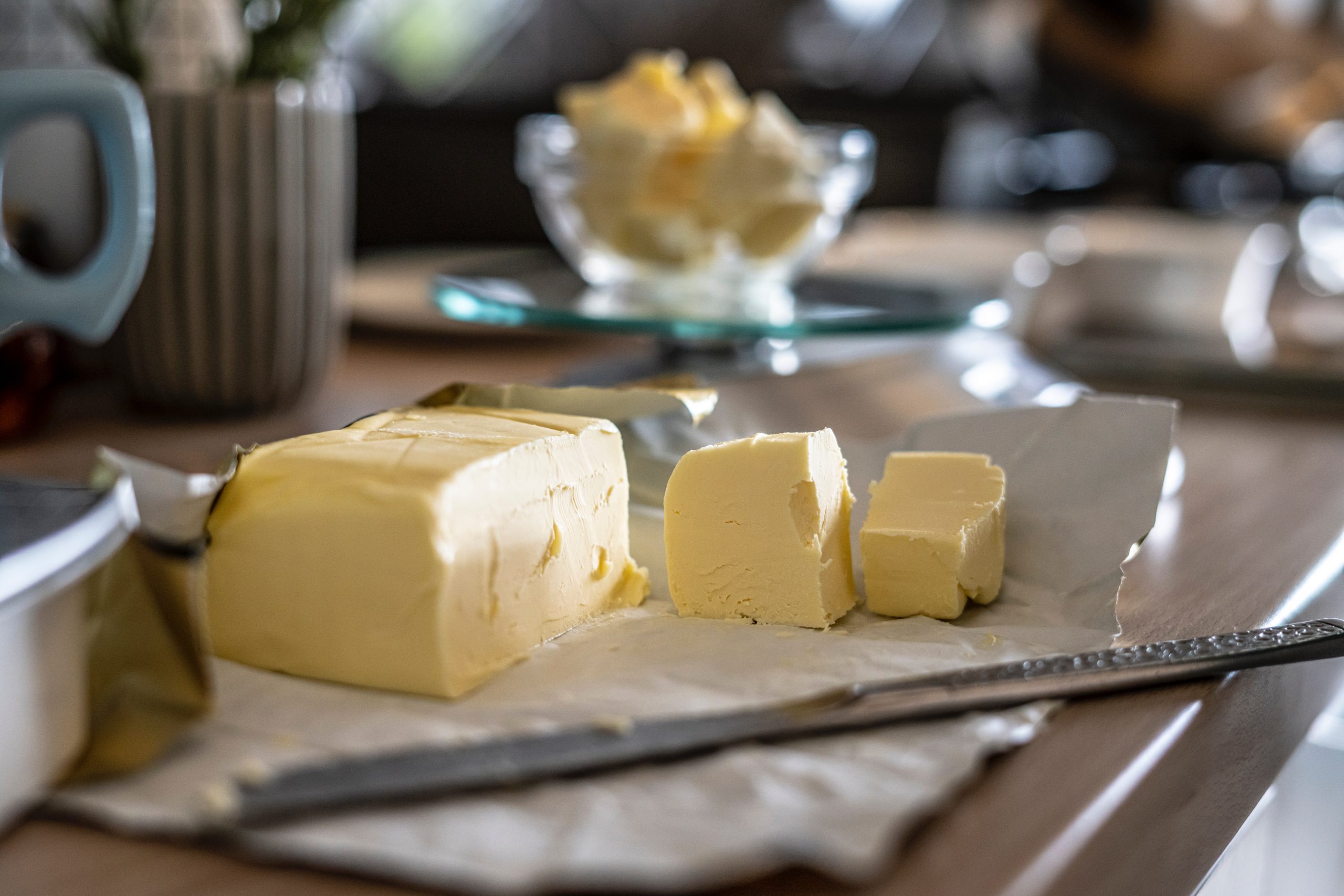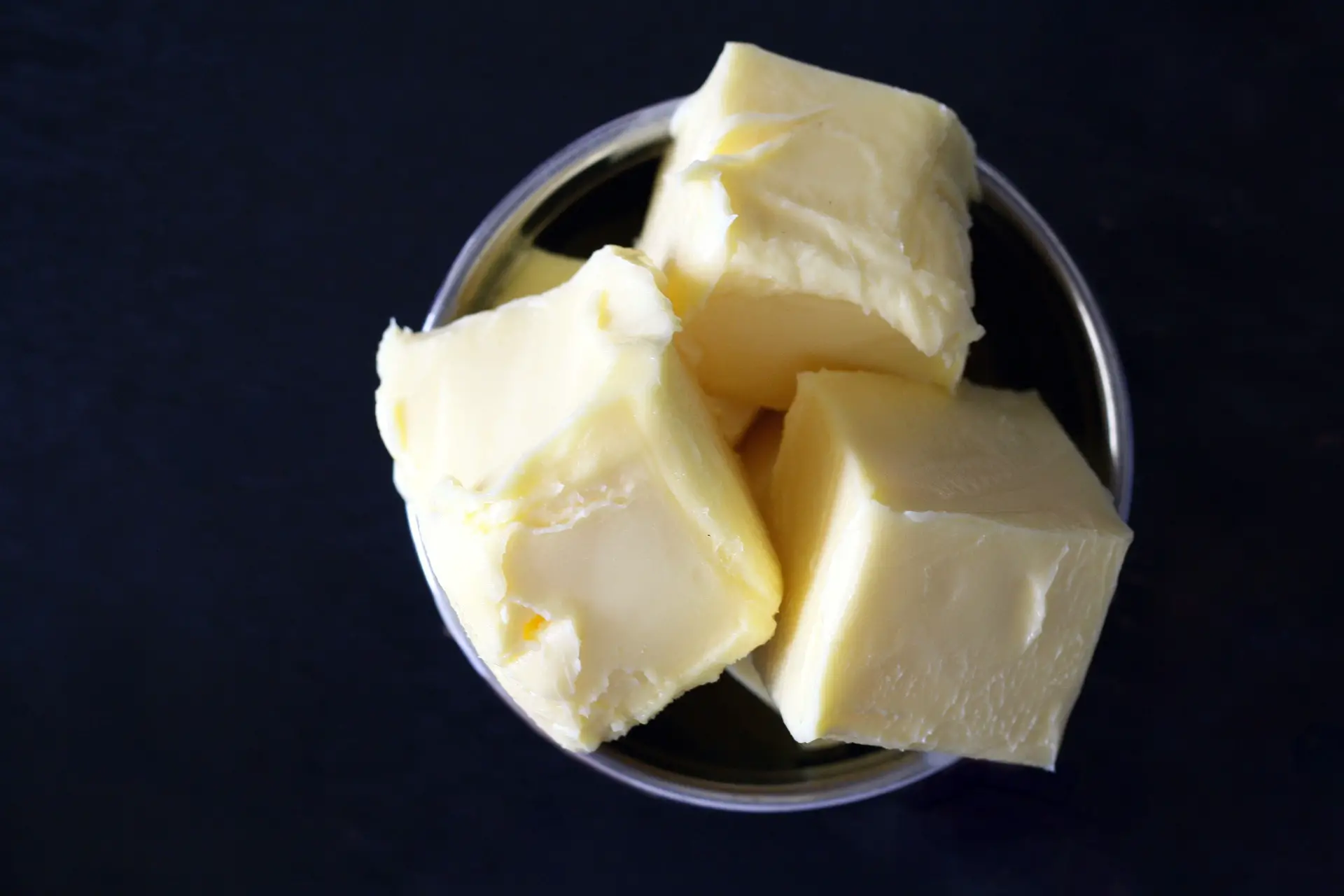Whether you want to make a sweet treat or freeze your butter for a recipe, you must know how to do it correctly. Here are a few tips to help you get it done right. Butter that has been salted or unsalted freezes very nicely. To preserve the delicate butter flavor while freezing, store it in its original carton and put it in a resealable freezer storage bag.

How to Freeze Butter Correctly?
The procedure of freezing butter is easy. Keep the butter in its original box or container if feasible so that you may later refer to the package’s sell-by or best-by date and save yourself the trouble of marking everything. Before freezing, put any boxes or sticks into storage bags.
Butter can absorb the aromas and odors of the items around it, so be sure to store it away from onions and other odoriferous frozen foods. If you don’t have the original packaging, cover the butter sticks in plastic wrap or aluminum foil before putting them in a freezer bag. Because it might be difficult to cut frozen butter, cut the sticks into 1- to 2-teaspoon-sized pieces, cover them tightly in aluminum foil or plastic wrap, and put them in freezer bags.
Store it in a Freezer-Safe Bag
Whether you want to use butter in your recipes or store it for longer, freezing it is a great option. You can freeze butter in a freezer-safe bag and preserve its shelf life for up to a year.
There are a few steps you should follow to freeze your butter properly. First, you should cut it into smaller pieces. Next, you should cover it with plastic wrap. This will help prevent freezer burn. Finally, it would be best if you placed the wrapped butter in an airtight container.
You can also freeze butter in a resealable freezer storage bag. This will keep the flavor of the butter intact.
If you are storing your frozen butter for a longer period, you may also consider using polyethylene packaging. Studies have shown that this type of packaging helps to maintain the quality of your frozen butter. This is especially important when you are freezing salted butter.
The most common type of butter that home and professional cooks choose to freeze is salted. However, you can store unsalted butter in the freezer for up to six months.
Layer it to Prevent Freezer Burn
Adding a layer of butter to prevent freezer burn when freezing is a simple and effective method. This will prevent the food from absorbing moisture from the air inside the bag.
The quality of frozen foods can be dramatically affected by freezer burn. This can change the color, texture, and flavor of the food.
The best way to prevent freezer burn is to store food at a low temperature. The USDA states that food stored at zero degrees Fahrenheit is safe to consume. This is important because freezing locks in freshness and nutrients.
Choosing the right container is also an important step in preventing freezer burn. The proper containers depend on the type of food you are freezing. The more you know about what works and what does not, the better your chances are of avoiding freezer burn.
Another tip for preventing freezer burn is to wrap food tightly. Sealing the package helps eliminate air from getting to the food. This also helps maintain its hydration.
How Long can Butter be Frozen?
Manufacturers claim that butter may be frozen for six to twelve months. Butter that has been frozen for more than a year can still be consumed if it is properly packaged and stored at a constant temperature.
The “smell test” and letting it thaw are the two greatest ways to determine. It’s probably acceptable to consume if it smells normal and not rotten, putrid, or otherwise “bad.”
We learned during our investigation that unsalted butter only maintains its optimal quality in the freezer for six months. Nevertheless, it should be secure to consume over the next 12 months.
Butter should be kept in the freezer to extend its shelf life because it is a fatty food. Keep plenty in the refrigerator for a few days, then defrost more as necessary.
Can you Freeze it in a Tub?
Yes, without a doubt. It would be ideal to do it in the original tub it came in as that will be sealed when you purchased it at the grocery store, but even if opened, there won’t be any issues. Your butter will turn out fine if you follow the instructions I gave above.
You should bear in mind while freezing butter in a tub that the larger the tub, the longer it will take for the butter to freeze and subsequently thaw. Buying smaller tubs might be a better option because if it’s a huge tub, you might have to defrost more than you need to.
One thing we discovered throughout our investigation is that one of the most well-known brands, Land O’Lakes, advises against freezing its butter in its tub since it “may fracture or break if frozen.” You might wish first to place your tubs in a freezer bag if this worries you.
Can I Freeze Spreadable Butter Products?
Along with our butter, we frequently get inquiries about the freezer-friendliness of Land O Lakes® Butter with Canola Oil, Butter with Olive Oil, and other butter spreads. Unfortunately, because the packaging is not freezer-grade, it cannot be frozen. If frozen, the original packaging may split or crack. We advise taking the product out of the original container and putting it in a freeze-grade container if you decide to freeze any of these items. If frozen before the USE BY date printed on the package, they can be frozen for up to four months once placed in a freezer-grade container.
How do you Thaw Frozen Butter?
Frozen butter should be defrosted either overnight in the refrigerator or for three to four hours at room temperature. Need a quicker fix? Here are a few quick suggestions:
- Use a box grater with big holes to grate the frozen butter, then let it sit until it thaws.
- Place the butter near the oven as it heats up if you’re cooking. The butter will thaw with the aid of the oven’s heat.
- The butter should be warmed up in the microwave in 10-second intervals until barely soft. As butter quickly turns from soft to soupy in the microwave, it’s advisable to err on the side of caution here.
Does Frozen Butter have to be Thawed to Use it?
It varies! Other than making sure that shortbread biscuits are always nearby, the nicest thing about freezing butter is that it can occasionally be preferred in recipes. Cold butter contributes to the appealing flaky texture of pie crust and biscuits as they steam in the oven.
Grate frozen butter on a box grater with large holes and combine with flour to use in pie dough (instead of cutting it in with a pastry cutter or your hands).
How to Use Frozen Butter?
You might be able to use frozen butter straight from the freezer, depending on the meal you are preparing. If your recipe, for instance, asks for melted butter, place some frozen butter in a hot pan, and it will instantly melt.
Alternatively, you could even zap it in the microwave to add to stir-fries or scrambled eggs! Additionally, you can grate the frozen butter right into your dishes. Grate it overheated bread or a bagel, or add it to sauces and gravies.
Additionally, you may use frozen butter in baked goods like biscuits and pie crusts.
For instance, grated frozen butter can be used to bake various foods. Simply grate the butter and sprinkle it on top of the flour.
Your dough will stay nice and cold thanks to the frozen butter, which will melt beautifully in the oven to create a delicious golden crispy layer on top of your meal!
Will Freezing Butter Ruin its Texture & Flavor?
No, is the response.
Butter may be frozen without sacrificing taste or consistency.
After a few months in the fridge, butter can go rancid.
Therefore, even if you don’t use it frequently, it is worthwhile to store it in the freezer.
On toast, cookies, and even in delicate baked items like pastry, butter refrozen in the refrigerator can be used just like fresh butter.
What’s the Best Way to Wrap Butter for Freezing?
Keep butter in its original container if at all feasible to keep track of the best-by date. Then, to protect it from freezer flavors and aromas, put it in a resealable freezer bag. Alternately, wrap butter sticks or blocks in foil or plastic wrap before putting them in a freezer bag that can be sealed.
Depending on how you generally use butter, you might want to divide it into smaller portions, wrap each in a separate piece of plastic wrap, and then put them all in a freezer bag that can be sealed. It’s better to keep butter separate from items with potential odors in the freezer. Additionally, like with any freezing, label and date the package so you can quickly recognize and use it.
Does Butter Freeze Well?
The good news is that if you take the time to freeze it properly, butter does freeze nicely. It will likely lose flavor quickly and absorb all of the freezer’s odors if you throw it in the freezer loosely wrapped in some cling film.
Before you realize it, your butter has a fishy, oniony flavor. Who desires that?
It will freeze well and work just like regular butter if you make an effort to wrap it tightly and keep it in an airtight container.
Conclusion
To increase the shelf life of butter, many people prefer to freeze it. When ready to use, microwave the frozen butter for 10 seconds at a time or place it in the refrigerator overnight to defrost. Unsalted butter doesn’t keep as long as salted butter. Even after 18 months of freezing, if everything is done correctly, the butter won’t lose its flavor or color.
